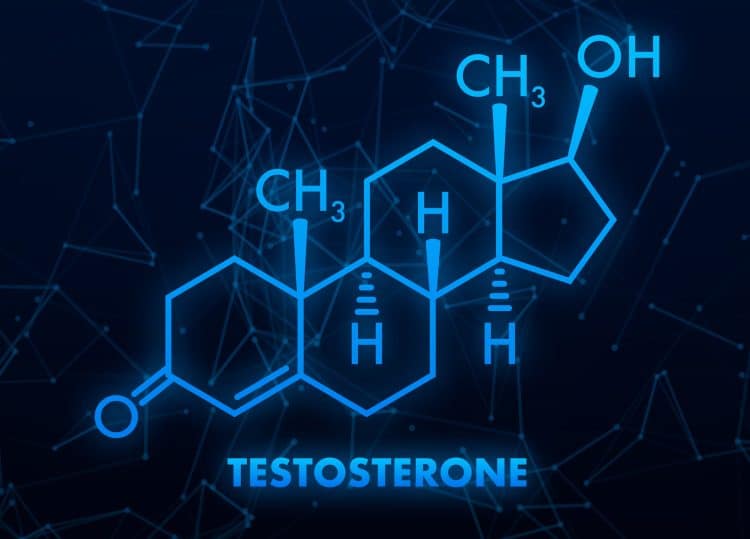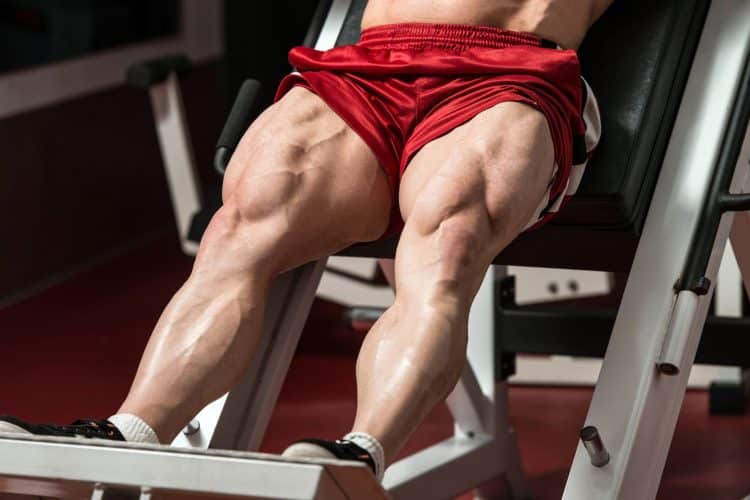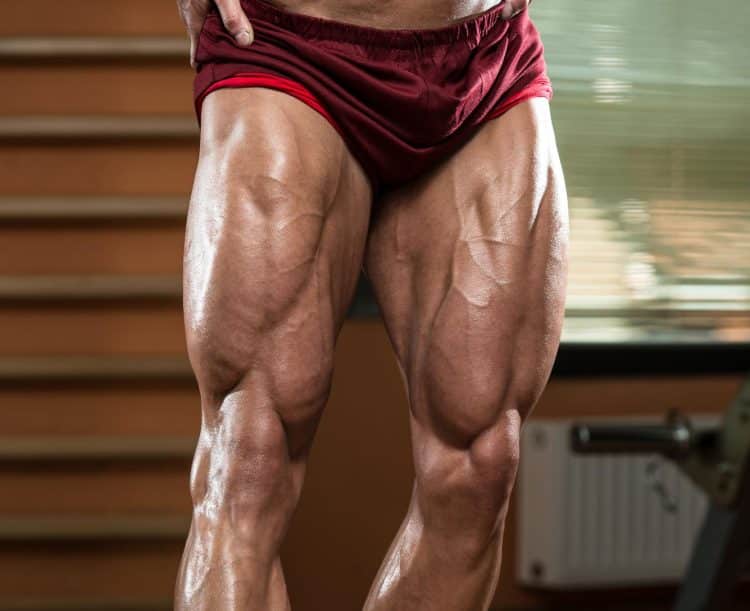Ask anyone to name a hormone, and they’ll probably say testosterone. Testosterone is the compound that makes men manly and helps you build muscle and burn fat.
The majority of performance-enhancing steroids are synthetic versions of testosterone, and most exercisers want to maximize testosterone production, so their workouts are more productive.
While you can use a testosterone booster to raise your T-levels, there are several alternative strategies that may be equally effective. This includes eating more healthy fats and cholesterol, reducing your sugar intake, and getting more sleep.
But do exercises like squats, deadlifts, and leg presses boost testosterone? Or is this just bro-science?
Let’s find out!
What is Testosterone, Anyway?
Testosterone is a hormone or chemical messenger that tells specific cells in your body how to act.

Both men and women produce testosterone, but, in general, men have around ten times the amount of testosterone as women. Testosterone, sometimes simply called T or test, is essential for making you muscular and lean, so it’s in your best interests to know a little more about this marvelous man-making hormone.
Testosterone is both anabolic and androgenic.
All that means is that it aids in muscle growth (anabolic) and is also responsible for the development of the secondary male characteristics such as body hair and beard growth, your deep voice, and sex drive (androgenic).
Your testosterone levels peak in your mid to late twenties and then slowly decline after that.
Several things can hasten this decline, including eating a low-quality diet, doing too much cardio, smoking heavily, testicular trauma (getting kicked in the nads), exposure to too many toxins, being over fat, and eating too many estrogen-forming foods, such as soya.
However, that doesn’t mean you have to let your testosterone levels fall without a fight. There are several things you can do that can preserve and even increase your testosterone levels naturally.
Proven T-boosting strategies include:
- Consuming more high-quality fats, such as olive and avocado oil, nuts, seeds, and whole eggs.
- Getting eight or more hours of sleep per night.
- Keeping your blood pressure within normal healthy parameters.
- Reducing your sugar intake.
- Consuming more cruciferous vegetables, such as cauliflower and broccoli.
- Increasing your zinc intake.
- Getting adequate vitamin D.
- Lifting heavy weights in the gym.
It’s also often said that exercises like squats and deadlifts have the potential to increase testosterone production. But is this true, or is it just well-meaning bro-science? Let’s discuss!
Does Working Out Legs Increase Testosterone Production?
Lifting weights has long been associated with increases in testosterone production. Intense full-body workouts have been shown to increase T-levels in men of all ages and levels of conditioning (1).

Intense exercise is a form of stress, and when faced with a perceived threat, your body responds by getting stronger and more muscular. That way, should it be exposed to the same threat again, it will be better equipped to deal with it.
Lots of things happen within your body to facilitate increases in muscle size and strength, including an increase in testosterone, IGF-1, and growth hormone production, which trigger increases in muscle protein synthesis for more rapid repair and growth.
Of course, as your body adapts to your workout and gets stronger, you progressively increase the intensity of your training so that you keep getting stronger and more muscular. This is the principle of progressive overload in action.
Of all the training you do, your lower body workouts are probably the most intense. After all, your legs are the largest and strongest muscles in your body, so lower body workouts are usually demanding by default.
As such, it’s not unreasonable to assume that if intense strength training boosts testosterone, leg training has the potential to trigger an even more significant increase in testosterone production.
This hypothesis is supported by several studies, all of which noted that T-levels increased after intense lower body workouts (2).
However, it’s also important to note that increases in testosterone after intense lower body and full-body training are usually relatively small and very short-lived. Testosterone levels typically return to baseline within a couple of hours.
So, while leg training DOES increase testosterone production, the effect is relatively small and doesn’t last long (3). And it’s not just leg training that boosts testosterone production; training any large muscle group, such as the chest or back, produces a similar effect.
This suggests that post-training increases in testosterone production do not play a significant role in building muscle or strength, and that baseline T-levels are actually more important.
In other words, it’s not enough to spike your T-levels a few times a week. Instead, you need to keep them raised for as long as possible, so long-term testosterone boosting strategies are more beneficial.
How to Maximize Testosterone Production with Strength Training

So, while intense strength training, including working your legs, causes an increase in your T-levels, the spike is usually relatively small and doesn’t last very long. However, that doesn’t mean it may not be beneficial to try and make this effect as significant as possible.
Strategies that MAY increase workout-related testosterone production include:
- Training with heavy weights – 80% or more of your 1RM
- Training close to failure
- Doing multiple sets – 3 to 6 per exercise
- Resting 60-90 seconds between exercises
- Focusing on large muscle groups
- Performing mostly compound exercises
- Keeping your training sessions to 90 minutes or less to avoid excessive increases in cortisol, which may drive T-levels down sooner
Wrapping Up
There is no denying the importance of leg day. Pairing a muscular chest, back, arms, and shoulders with underdeveloped legs will make your physique look far less impressive.
Friends don’t let friends skip leg day!
But, contrary to bro-science, training your legs won’t magically increase your testosterone levels and trigger growth in other body parts. Spikes in testosterone after leg training are pretty small and don’t last very long. Your baseline testosterone levels are much more important than post-workout bumps in testosterone production.
So, instead of worrying about how your workouts cause short-term fluctuations in your testosterone levels, focus more on what you can do to cause long-term increases in test production.
Combined with a solid training plan, good nutrition, and plenty of sleep, will have a much more significant impact on your muscle and strength-building progress than the spikes in T-production caused by your strength training workouts.
References:
1 – PubMed: Effects of progressive resistance training on growth hormone and testosterone levels in young and elderly subjects https://pubmed.ncbi.nlm.nih.gov/2796409/
2 – PubMed: Endocrine response to high-intensity barbell squats performed with constant movement tempo and variable training volume https://pubmed.ncbi.nlm.nih.gov/30531700/
3 – European Journal of Applied Physiology and Occupational Physiotherapy: Comparison of serum testosterone and androstenedione responses to weightlifting in men and women https://link.springer.com/article/10.1007/BF00423247


